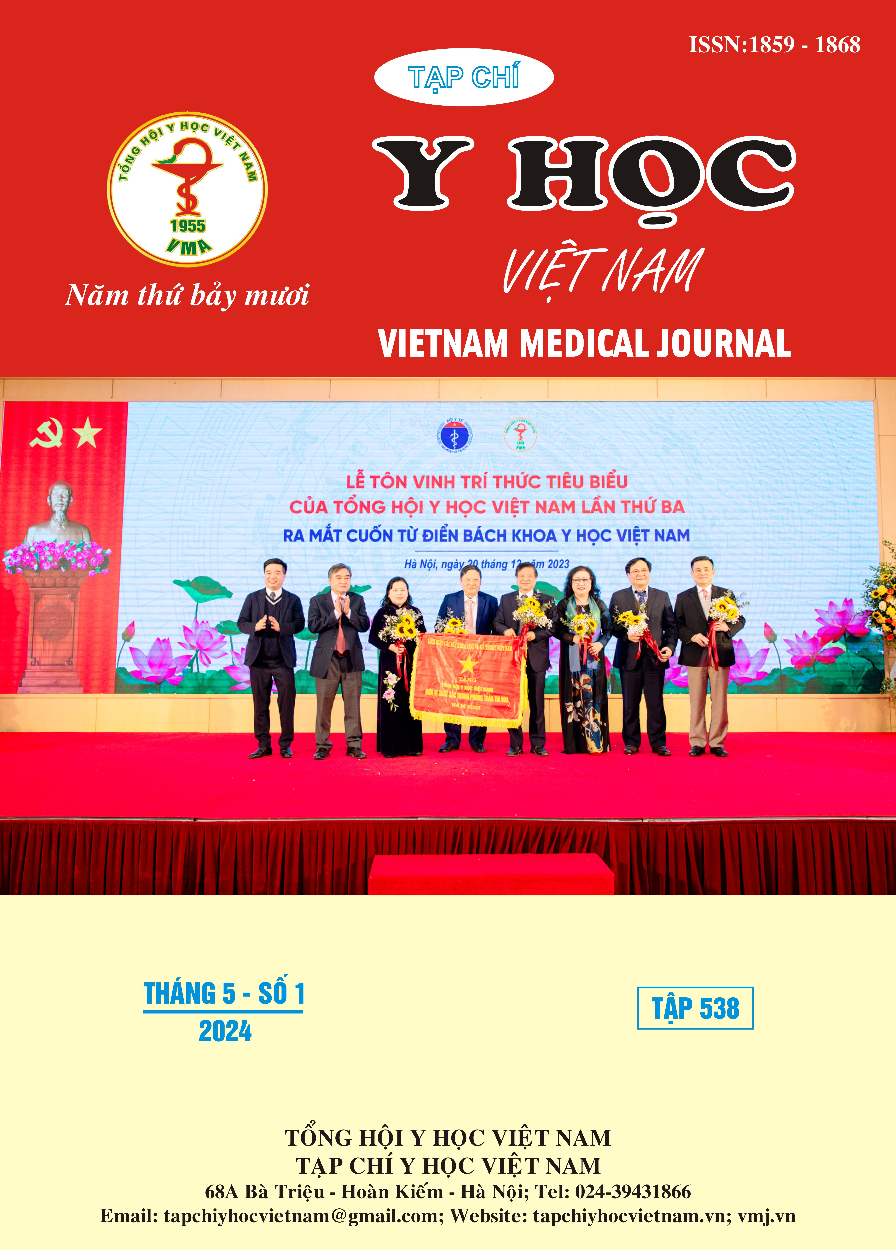RESULTS AND INITIAL EXPERIENCE OF ROBOT-ASSISTED RADICAL NEPHRECTOMY AT BINH DAN HOSPITAL
Main Article Content
Abstract
Introduction: to evaluate and analyze the initial experience of robot-assisted radical nephrectomy (RARN) at Binh Dan Hospital. Patients and methods: We retrospectively analyzed data from 46 patients diagnosed with renal tumors who underwent robot-assisted radical nephrectomy at Binh Dan Hospital from January 2020 to September 2023. Clinical characteristics, surgical procedures, and complications were recorded and analyzed. Results: 46 patients (29 males, 17 females, median age 58 years, range 48 to 66) were treated. The median tumor diameter was 68 mm, and 24, 19 and 3 patients were classified into cT1, cT1 and cT3, respectively. No patients required conversion to open surgery, and the median operative time and docking time were 158 and 14 minutes, respectively. The median estimated blood loss was 46 ml, and no patient required blood transfusion. During the perioperative period, no major complications corresponding to Clavien-Dindo grade ≥ 3 occurred. Pathological results identified 42 cases of renal cell carcinoma (RCC) and 4 cases of non - RCC. Conclusion: Based on this study, we preliminarily conclude that robot-assisted radical nephrectomy is a safe and effective method. The perioperative outcomes from initial experiences are promising. Overall, the study helps reinforce the evidence, aiming to position RARN as a promising alternative solution to conventional laparoscopic surgery in cases of complex renal tumors or instances where robot-assisted partial nephrectomy is not feasible.
Article Details
Keywords
: robot-assisted radical nephrectomy, renal tumor.
References
2. Shin TJ, Song C, Kim CS, et al. Surgical details and renal function change after robot-assisted partial nephrectomy. Int J Urol. 2020;27:457-462.
3. Motoyama D, Sato R, Watanabe K, et al. Perioperative outcomes in patients undergoing robot-assisted partial nephrectomy: comparative assessments between complex and noncomplex renal tumors. Asian J Endosc Surg. 2021;14:379-385.
4. Klingler DW, Hemstreet GP, Balaji KC. Feasibility of robotic radical nephrectomy—initial results of single-institution pilot study. Urology. 2005;65:1086-1089.
5. Jeong IG, Khandwala YS, Kim JH, et al. Association of robotic-assisted vs laparoscopic radical nephrectomy with perioperative outcomes and health care costs, 2003 to 2015. JAMA. 2017; 318:1561-1568.
6. Gershman B, Bukavina L, Chen Z, et al. The association of robot-assisted versus pure laparoscopic radical nephrectomy with perioperative outcomes and hospital costs. Eur Urol Focus. 2020;6:305-312.
7. Anele UA, Marchioni M, Yang B, et al. Robotic versus laparoscopic radical nephrectomy: a large multi-institutional analysis (ROSULA Collaborative Group). World J Urol. 2019;37:2439-2450.
8. Asimakopoulos AD, Miano R, Annino F, et al. Robotic radical nephrectomy for renal cell carcinoma: a systematic review. BMC Urol. 2014;14:75.
9. Motoyama D, Matsushita Y, Watanabe H, et al. Significant impact of three-dimensional volumetry of perinephric fat on the console time during robot-assisted partial nephrectomy. BMC Urol. 2019;19:132.
10. Shen D, Du S, Huang Q, et al. A modified sequential vascular control strategy in robot-assisted level III-IV inferior vena cava thrombectomy: initial series mimicking the open ‘milking’ technique principle. BJU Int. 2020; 126: 447-456.


